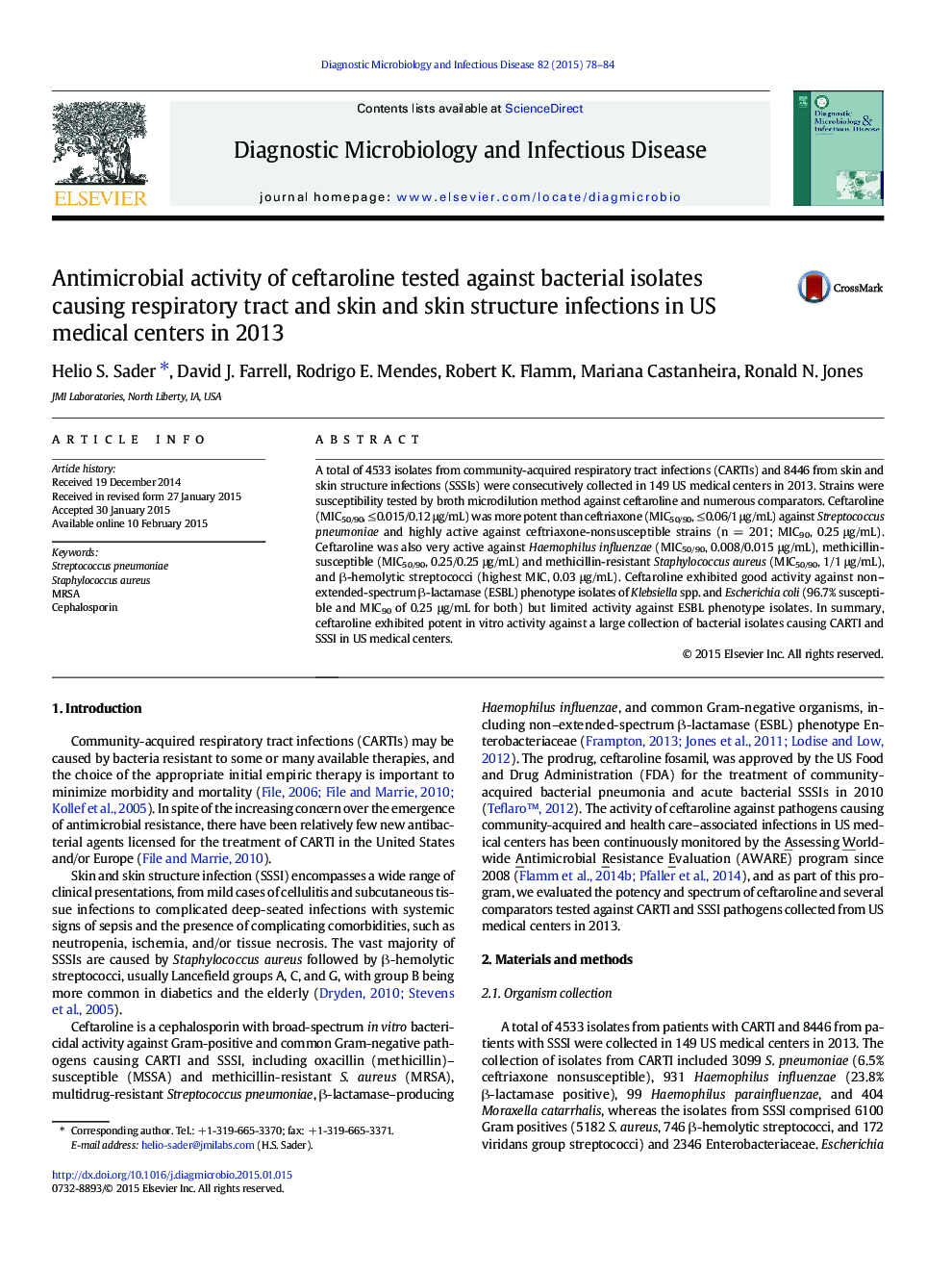| Article ID | Journal | Published Year | Pages | File Type |
|---|---|---|---|---|
| 6115707 | Diagnostic Microbiology and Infectious Disease | 2015 | 7 Pages |
Abstract
A total of 4533 isolates from community-acquired respiratory tract infections (CARTIs) and 8446 from skin and skin structure infections (SSSIs) were consecutively collected in 149 US medical centers in 2013. Strains were susceptibility tested by broth microdilution method against ceftaroline and numerous comparators. Ceftaroline (MIC50/90, â¤0.015/0.12 μg/mL) was more potent than ceftriaxone (MIC50/90, â¤0.06/1 μg/mL) against Streptococcus pneumoniae and highly active against ceftriaxone-nonsusceptible strains (n = 201; MIC90, 0.25 μg/mL). Ceftaroline was also very active against Haemophilus influenzae (MIC50/90, 0.008/0.015 μg/mL), methicillin-susceptible (MIC50/90, 0.25/0.25 μg/mL) and methicillin-resistant Staphylococcus aureus (MIC50/90, 1/1 μg/mL), and β-hemolytic streptococci (highest MIC, 0.03 μg/mL). Ceftaroline exhibited good activity against non-extended-spectrum β-lactamase (ESBL) phenotype isolates of Klebsiella spp. and Escherichia coli (96.7% susceptible and MIC90 of 0.25 μg/mL for both) but limited activity against ESBL phenotype isolates. In summary, ceftaroline exhibited potent in vitro activity against a large collection of bacterial isolates causing CARTI and SSSI in US medical centers.
Related Topics
Life Sciences
Immunology and Microbiology
Applied Microbiology and Biotechnology
Authors
Helio S. Sader, David J. Farrell, Rodrigo E. Mendes, Robert K. Flamm, Mariana Castanheira, Ronald N. Jones,
